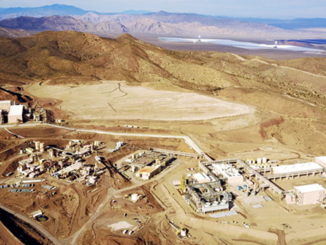
Netzsch Grinding & Dispersing of Hanau has developed a patent pending grinding process and new equipment for processing sensitive Nd-Fe-B-compounds and other rare earth alloys. They can be ground reliably to fine powders under inert gas operation giving a narrow particle size distribution and defined upper particle size limit with reproducible results that enhance the production of rare earth magnets and parts, the company said.
Rare-earth magnets are more complicated to manufacture than conventional magnets, the company notes. A decisive factor for the quality and properties of permanent magnets is a raw material with a narrow particle size distribution with the lowest possible fraction of finest and coarsest particles.

The companys new M-Jet system combines a spiral jet mill with a dynamic air classifier. It is designed to yield highly reproducible fineness independent of the load in the gas jets. According to Frank Winter, head of development construction, compared to fluidized bed jet mills or target mills, it can automatically reject components difficult to grind. This requires only a few seconds and takes place during normal operation. The overpressure in the mill ensures that components which are difficult to grind are transported into the filter. This eliminates contamination of the product-conveying piping with coarse product particles or problematic components.
Due to the differences in design, the product content during the grinding phase of an M-Jet is 20 to 25 times lower than that of a fluidized bed jet mill with the same amount of grinding gas, explained Winter. At the same time, this results in an extremely low product loss during product change due to the smaller volume of the grinding chamber. In addition to this, practically no fluctuations in throughput capacity and especially in the particle size distribution occur during start and stop of the plant. Furthermore, a selective grinding of individual alloy components does not take place.
The dynamic air classifier integrated in the M-Jet provides a clearly defined maximum particle size of the ground product. In a subsequent step, undesirable finest particles can be separated out by classifying the ground material with a fines classifier.
For more information, visit: https://www.netzsch-grinding.com/en/



